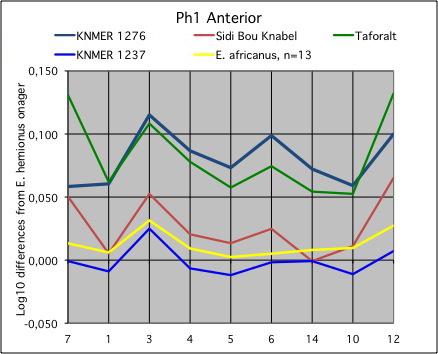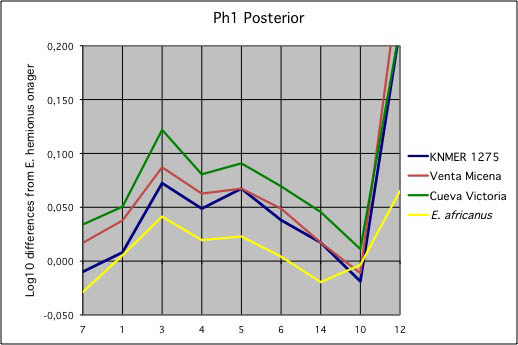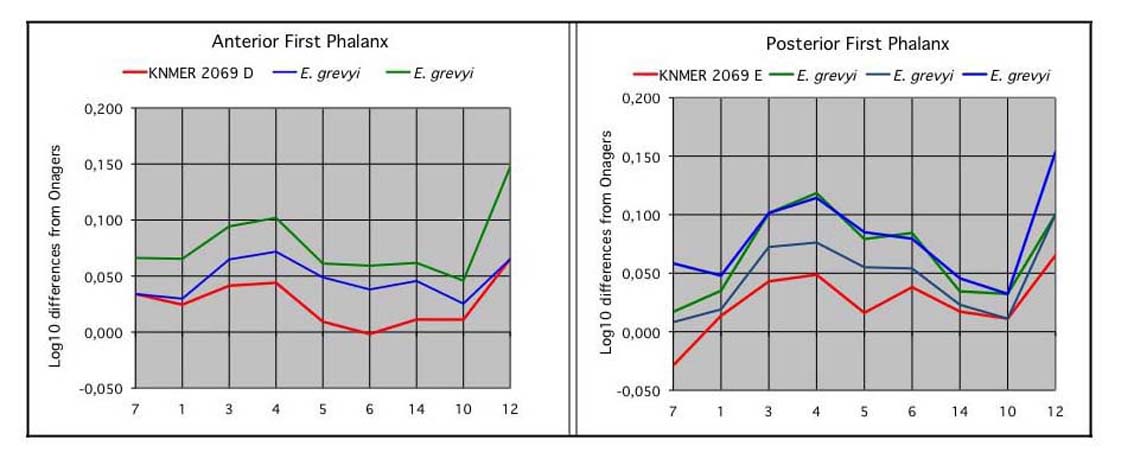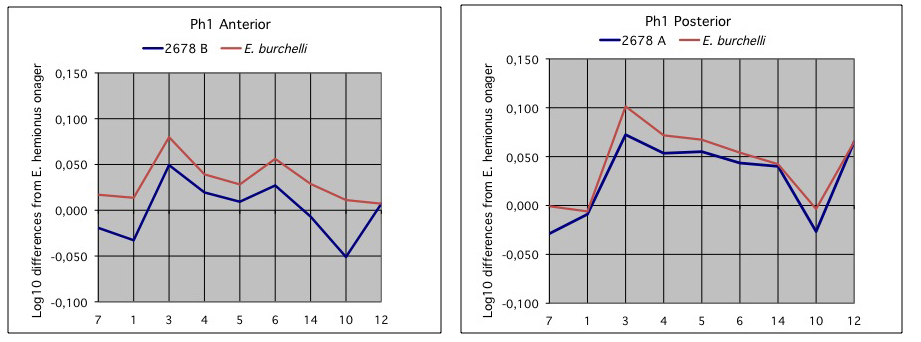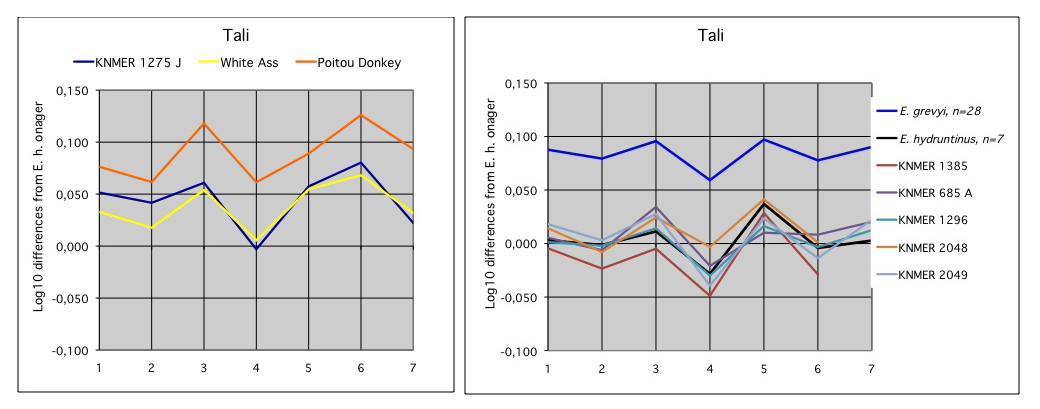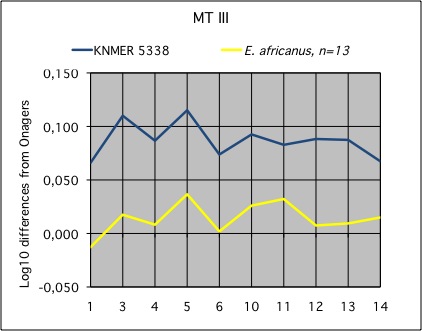Limb Bones
Limb bones morphs are represented by Lozenges: orange for hemionine, yellow for asinine, green for Burchell-like.
Obviously, it is impossible to qualify each limb bone in this way. And obviously in the same species, all bones do not belong in a single category. Schematically hemionine bones are most slender, asinine – less so, and Burchell-like – even less.
Here I present a few examples.
1. First phalanges (Ph1), Fig. 12
– Asinine first anterior phalanges (Ph1A).
Figure 13 shows that E. africanus Ph1A differ from those of E. hemionus onager Ph1A – reference zero line - mainly by being slightly wider (measure 3). The proportions of KNM ER 1237 from Koobi Fora smaller form of MA zone (about 1.5 My old) are nearly identical. Those of the three other fossils may be also classified as “asinine†although their distal supra-articular breadths (measure 6) are wider.
– Asinine first posterior phalanges (Ph1P).
Figure 14 shows that E. africanus Ph1P differ from those of E. hemionus onager Ph1A by being slightly wider in the diaphysis and deeper at the proximal end (measures 3 and 5). Of course, since these are posterior phalanges, they have also greater supra-tuberosital lengths (measure 12). The proportions of KNM ER 1275 from Koobi Fora Allohippus cf. koobiforensis of MA zone (about 1.5 My old) and two fossil equids of about the same age are not altogether very different. They may be also classified as “asinine†.
– Grevy-like first anterior and posterior phalanges (Ph1A, P).
Figure 15 shows that the smaller form mentioned above may have phalanges looking more like some E. grevyi than like E. africanus (Fig. 13 and 14)
– Burchell-like first anterior and posterior phalanges (Ph1A, P).
Fig. 16 shows that Burchell-like first phalanges are more robust (measures 1-3) than those of E. grevyi (Fig. 15) and Asses (Fig. 13 and 14). Also that these proportions are found at Koobi Fora at around 750 Ky ago.
2. Tali Fig. 17
Figure 17 shows how Tali from Koobi Fora differ from each other, from E. grevyi, E. hydruntinus, and E. hemionus onager, by size and proportions. KNM ER 1275 (referred to Allohippus cf. koobiforensis of around 1.5 My old) is bigger (all measures) than the reference Onager, has a relatively smaller trochlear breadth (measure 4), and bigger distal articular dimensions (5, 6). Some extant Poitou donkeys and Egyptian White Asses are similar. E. grevyi tali have about the same size but differ by broader (measure 5) and shallower (measure 6) distal articular surfaces. Tali of other Koobi Fora and of E. hydruntinus are much smaller but otherwise similar.
3. Third Metatarsals , Fig. 18
Figure 18 shows how a MT III from Koobi Fora referred to Allohippus koobiforensis (about 1.8 My) differ from the reference E. hemionus onager, by size and proportions. KNM ER 5338 is bigger (all measures), wider in the diaphysis, and the proximal an distal extremities (measures 3, 5, 10, and 11). It is also bigger than the extant African Wild Ass but has similar proportions.
![]() en
en
![]() Tools (English)
Tools (English)
![]() Morphological Characters
?
Morphological Characters
?
Site powered by SPIP 4.3.3 + AHUNTSIC
Réalisé par agence web Epistrophe |